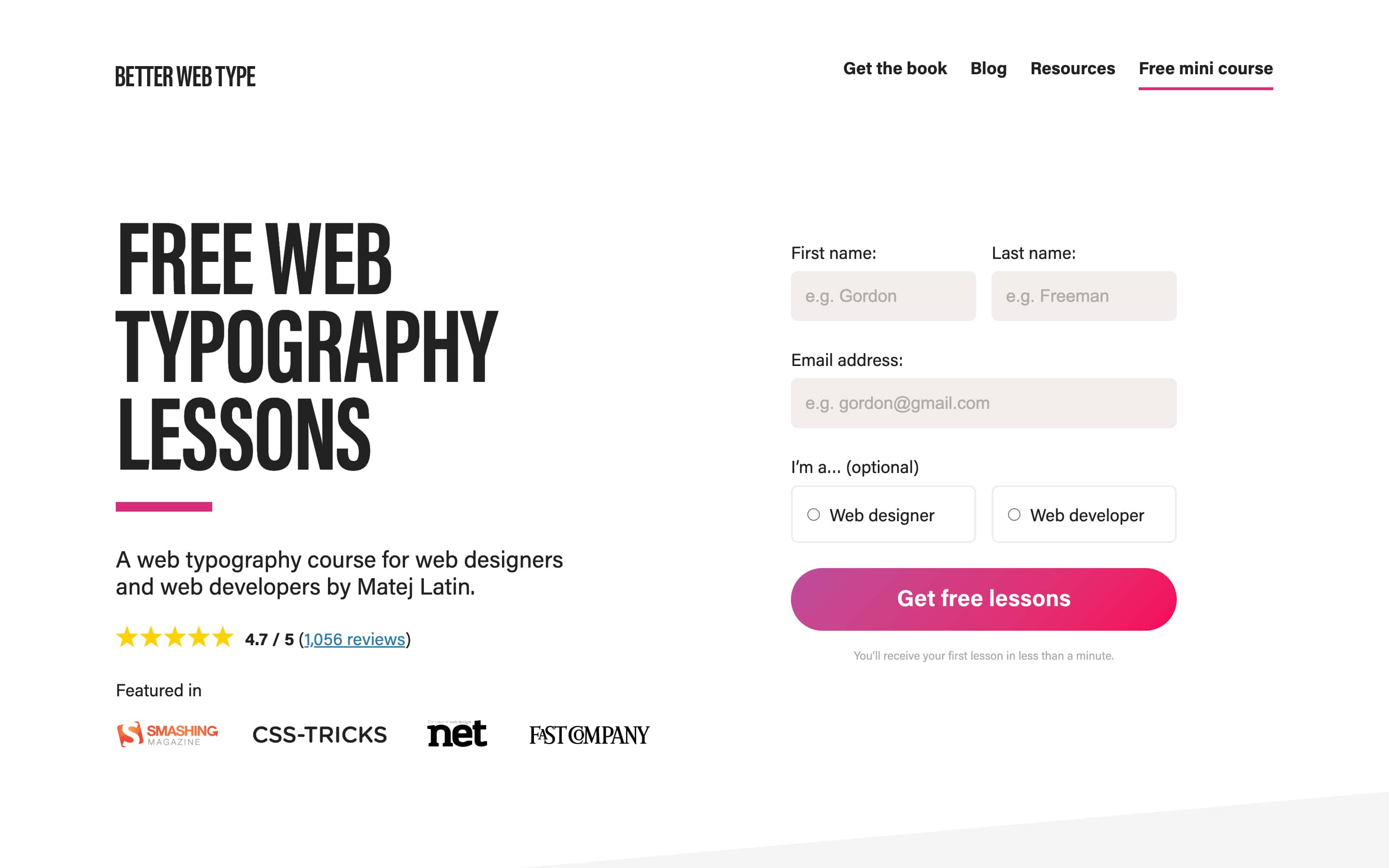Beyond Daily Yonder: Insights and Updates
Exploring daily news and insightful information from various fields.
Get Your Fonts in Line: Typography Tips to Dazzle Your Visitors
Unleash stunning typography secrets that will captivate your visitors! Transform your blog with expert tips to elevate your design.
10 Typography Tips to Enhance Your Website's User Experience
Typography plays a crucial role in shaping a website's user experience. To start, choose a font that aligns with your brand's personality and values. For instance, serif fonts tend to convey elegance while sans-serif fonts look modern and clean. Limit your font choices to two or three to maintain consistency and avoid overwhelming your visitors. Always ensure your text is easy to read by maintaining a suitable font size, typically between 16-20px, and utilizing adequate line spacing (1.5-1.6) for improved readability.
Another essential tip is to use contrast effectively. A high contrast between your text and background enhances legibility and ensures that your content stands out. Consider using color strategically to draw attention to key messages or calls to action. Additionally, making use of hierarchy in your typography can guide users through your content seamlessly. Use headings (H1, H2, H3) to break up sections and create a visual structure. As you implement these typography tips, keep user engagement in mind to create a more enjoyable browsing experience.

How to Choose the Perfect Font Pairings for Your Design
Choosing the perfect font pairings for your design is essential to create a cohesive and visually appealing aesthetic. One effective approach is to select fonts that contrast yet complement each other. For instance, consider pairing a bold, modern sans-serif font for headings with a more traditional serif font for body text. This combination not only establishes a clear hierarchy but also enhances readability. Here are some tips to keep in mind:
- Consider the purpose: The tone of your design should guide your font selection.
- Limit your choices: Stick to two or three fonts to maintain harmony.
- Test for legibility: Ensure your choices are readable at different sizes.
In addition to contrast, another strategy is to use font pairings that share similar characteristics, such as weight or style, to create a unified look. For example, pairing a light-weight sans-serif font with a heavier, bold version of the same family can provide a subtle yet effective contrast. Experimenting with different combinations will help you discover unique pairings that enhance your design. Remember to seek feedback and make adjustments based on the overall visual impact and audience perception of your selected fonts.
The Impact of Typography on Brand Identity: What You Need to Know
Typography plays a crucial role in establishing and enhancing brand identity. The choice of font, size, color, and spacing contributes significantly to how a brand is perceived by its audience. A well-chosen typeface can communicate a brand's personality—be it modern, classic, playful, or serious. For instance, sans-serif fonts often convey a contemporary and clean look, while serif fonts can evoke a sense of tradition and reliability. Therefore, integrating the right typography is essential for creating a memorable and recognizable brand image.
In addition to aesthetics, typography also influences readability and the overall user experience. Poorly chosen fonts can lead to confusion and distraction, detracting from the brand message. To build a strong brand identity, consider these key aspects of typography:
- Consistency: Maintain uniformity across all platforms.
- Hierarchy: Use different font weights and sizes to guide the reader's attention.
- Legibility: Ensure that the chosen typeface is easily readable, especially on digital devices.
By paying attention to these factors, brands can effectively leverage typography to reinforce their values and connect with their audience.